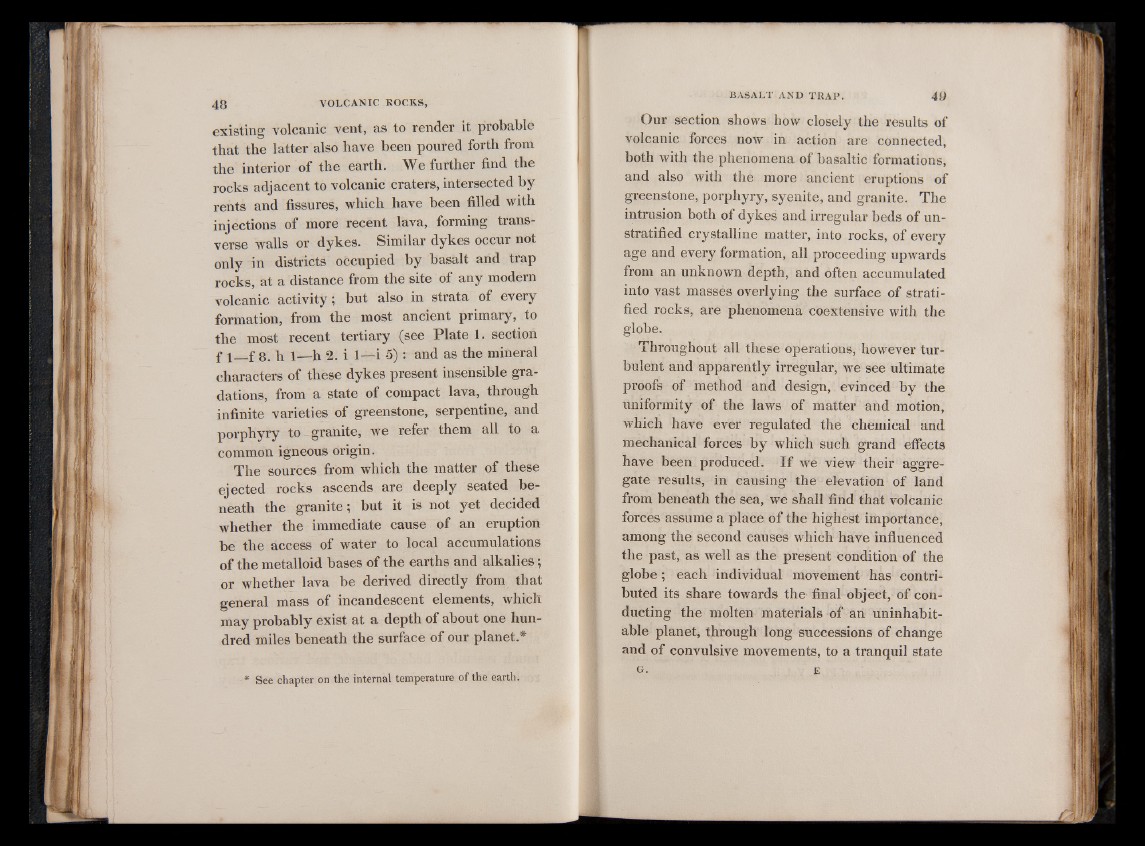
existing volcanic vent, as to render it probable
that the latter also have been poured forth from
the interior of the earth. We further find the
rocks adjacent to volcanic craters, intersected by
rents and fissures, which have been filled with
injections of more recent lava, forming transverse
walls or dykes. Similar dykes occur not
only in districts occupied by basalt and trap
rocks, at a distance from the site of any modern
volcanic activity; but also in strata of every
formation, from the most ancient primary, to
the most recent tertiary (see Plate 1. section
f 1 f 8. h 1— h 2. i 1— i 5) : and as the mineral
characters of these dykes present insensible gradations,
from a state of compact lava, through
infinite varieties of greenstone, serpentine, and
porphyry to granite, we refer them all to a
common igneous origin.
The sources from which the matter of these
ejected rocks ascends are deeply seated beneath
the granite; but it is not yet decided
whether the immediate cause of an eruption
be the access of water to local accumulations
of the metalloid bases of the earths and alkalies;
or whether lava be derived directly from that
general mass of incandescent elements, which
may probably exist at a depth of about one hundred
miles beneath the surface of our planet.*
See chapter on the internal temperature of the earth.
BASALT AND TRAP. 49
Our section shows how closely the results of
volcanic forces now in action are connected,
both with the phenomena of basaltic formations,
and also with the more ancient eruptions of
greenstone, porphyry, syenite, and granite. The
intrusion both of dykes and irregular beds of unstratified
crystalline matter, into rocks, of every
age and every formation, all proceeding upwards
from an unknown depth, and often accumulated
into vast masses overlying the surface of stratified
rocks, are phenomena coextensive with the
globe.
Throughout all these operations, however turbulent
and apparently irregular, we see ultimate
proofs of method and design, evinced by the
uniformity of the laws of matter and motion,
which have ever regulated the chemical and
mechanical forces by which such grand effects
have been produced. I f we view their aggregate
results, in causing the elevation of land
from beneath the sea, we shall find that volcanic
forces assume a place of the highest importance,
among the second causes which have influenced
the past, as well as the present condition of the
globe; each individual movement has contributed
its share towards the final object, of conducting
the molten materials of an uninhabitable
planet, through long successions of change
and of convulsive movements, to a tranquil state
G. E